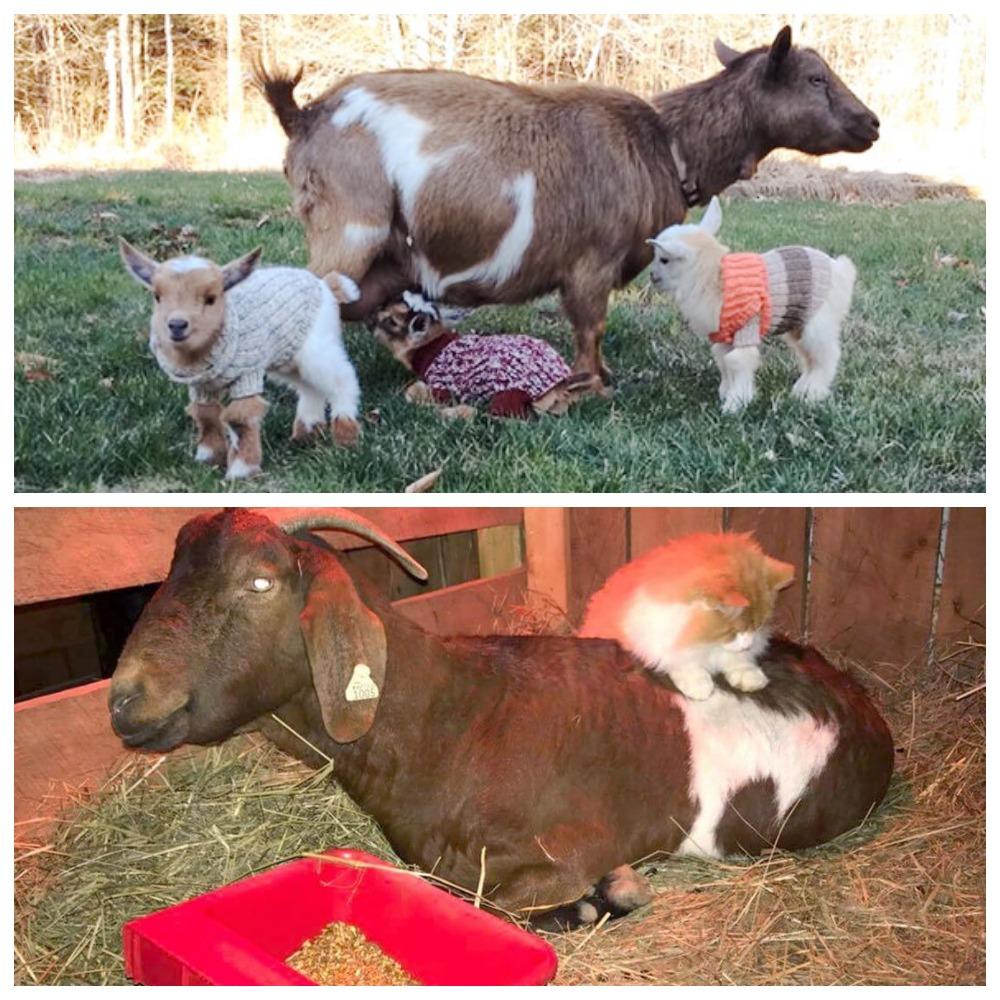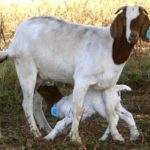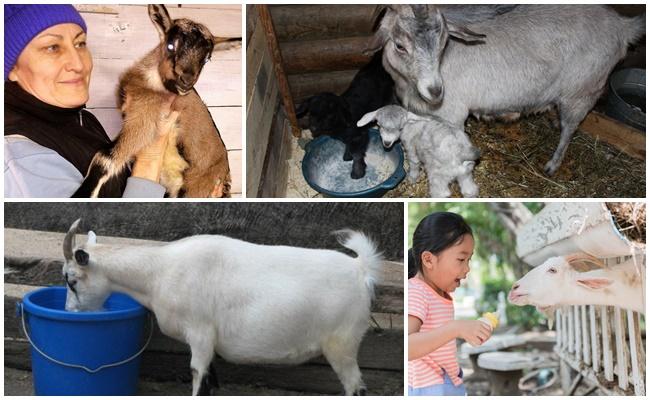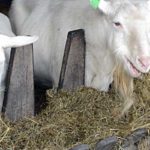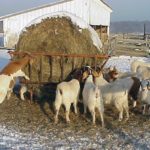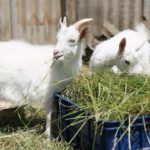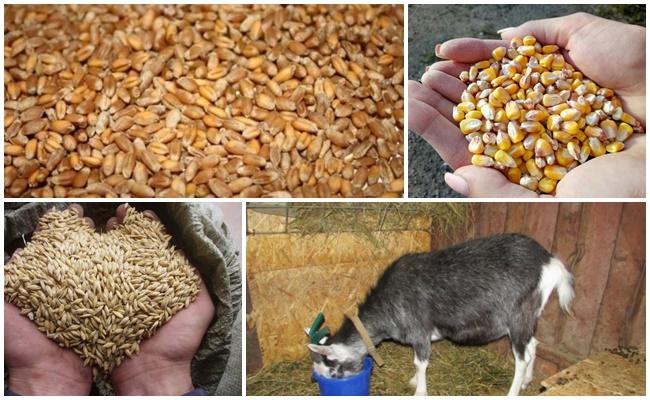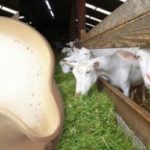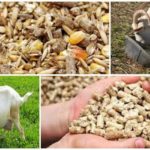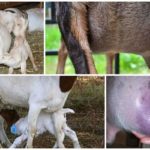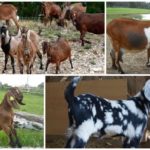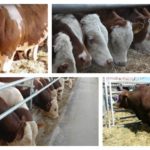What can you feed a goat immediately after lambing? It is recommended to give the female goat that has given birth to warm, sweet water to drink. After 3-4 hours, the goat can be fed legume-cereal hay or green grass. As a supplement, animals are allowed to be given juicy vegetables and fruits, as well as corn silage. It is important to remember that the more water in the feed, the more milk there will be in the udder.
Why change your diet?
A goat is a domestic animal kept for its milk. She begins to milk only after the first lambing.The female usually gives birth somewhere in the second year of life. After the first goat appears, the animal can be milked for a very long time. However, to prolong lactation, the female will have to be taken to mating once a year.
Due to pregnancy, various changes occur in the animal's body. This is due to the gestation of the fetus. During this period, the milking goat is gradually stopped being milked. This is done so that everyone nutrients did not go into milk, but for the development of the future goat. 1-2 months before giving birth, the female completely stops milking.
Of course, the process of milk production depends not only on the milking process itself, but also on what the goat is fed. It is recommended that any dairy animal be placed on a special dry diet before lambing or calving.
During pregnancy, the goat should eat plenty of legume-cereal hay and straw or fresh grass and green cereals.
As a supplement, females can be given a small amount (compared to the lactation period) of grain (150 g per day), vegetables (170 g per day), and corn silage (180 g per day). The lack of vitamins in winter is compensated with the help of pharmaceutical vitamin preparations and spruce branches.
After lambing, the animals' diet must be changed again. To increase milk, it is recommended to introduce more succulent feed (vegetables and silage) into the menu of lambing goats. After all, such food contains a lot of water, which promotes the production of more milk. On the contrary, grain feeding should be reduced. The diet of animals is changed in order to regulate milk production.
What to give in the first hours?
Immediately after lambing, it is recommended to give the female warm water with sugar. Glucose will restore the animal’s strength and have a good effect on lactation.A goat that has given birth can be fed only after 3-4 hours. It happens that immediately after lambing the animal loses its appetite. To stimulate it, the female is given sauerkraut brine.
A goat, like any ruminant, must first be fed a diet containing fiber to get the rumen working. In winter, females are given legume and cereal hay, and in summer they can be taken out to pasture on green grass. In the first hours, the norm is halved, then gradually the amount of feed is increased. After lambing, it is recommended to introduce a little bit of vegetables and silage into the animals’ diet.
It is better not to give grain during this period. Goats recover well from grains. However, this food does not increase lactation. The health of the kids depends on the nutrition of lactating females, and the amount of milk production in the udder depends on the content of succulent feed in the diet.
Rules for feeding goats after lambing
Typically females are mated in the fall and their kids are born in the spring. During this period, the main food of animals is hay and straw.
True, as summer approaches, the percentage of vitamins and minerals in roughage decreases.
As a supplement, females after childbirth are recommended to be given more vegetables (carrots, sugar beets, pumpkin). Sunflower cake will help increase the fat content. Grain mixtures (corn, barley, oats) can be given after hay, but not more than 200 grams per day.
Water has a positive effect on increasing lactation. The female is given water in between feedings, usually 2 times a day. One animal is given at least 5 liters of water at a time. You can add a little sugar (50 grams) to the liquid.
In summer, it is much easier to milk a lambing goat. Physical activity, walks in the fresh air and, of course, green grass help increase lactation.A nursing female should eat to her heart's content. Typically, a goat eats up to 6-8 kg of grass per day.
Features of feeding in winter
To increase milk yield in winter, lambing females are given more water and succulent feed. It is prohibited to change the diet of animals abruptly. The main food in winter should remain hay (up to 2-3 kg per day). As a supplement, females are given juicy and sweet vegetables.
In winter, the menu of goats should include grain mixtures, cake, meal, and mixed feed. Recommended amount of concentrated feed: from 100 to 200 grams. To avoid ketosis, in parallel with grain, females are given water with sugar, spruce or pine branches, salt (10 g per day per individual), pharmaceutical vitamins and minerals.
Return to normal mode
In the first weeks, all milk should be used to feed newborn animals. To increase lactation, it is recommended to milk the female at least once a day, immediately after feeding the cubs. There should not be a drop of milk left in the udder. This procedure will give a signal to the brain and increase lactation.
A kid can live under its mother and feed on milk for up to 3 months. Gradually he is transferred to plant foods. The female’s nutrition must be given special attention even after feeding the kids. After all, the animal’s lactation and the fat content of the milk depend on the quality and quantity of feed. In normal mode, the goat should eat to its heart's content.
The main food in summer is grass, in winter - hay. In between feedings, goats are given water. Salt must be present in the diet. Animals are given vegetables, fruits, tops, and grain mixtures as feed.It is beneficial for females to eat oats, barley, and corn. In winter and summer, it is recommended to give goats boiled potatoes, mixed feed, cake, meal, premixes, tree branches, and leaves of garden crops.
What do breeders advise?
Experienced livestock specialists recommend giving a pregnant dairy goat dry food (hay, straw), less water, small amounts of vegetables (carrots, beets) and minimal doses of grain in winter. You can support the body of females with the help of pharmacy vitamins and minerals.
After lambing in the spring and winter, the goat's main food should remain hay. This is a food containing fiber. It is hay that improves the functioning of the rumen. As a supplement, it is recommended to give lambing females more juicy vegetables or silage (corn). The more water in the feed, the more milk there will be. For problems with digestion and lack of appetite, goats are given nutritional yeast, cabbage pickle, dill, and caraway decoction. The room where animals are located should be light. In the dark, females eat much worse.
In the summer, a lambing goat can receive all the useful substances in the meadow. The main thing is to ensure that the animal does not eat poisonous plants. Goats are very curious and taste everything. It is advisable to graze females in a meadow where clover, dandelions, nettles, alfalfa, timothy, and fescue grow.
It is recommended to milk a lambing goat that is nursing its young. True, this should be done only after the kids have drunk plenty of milk. Livestock experts advise milking a goat 2-3 times a day. Before milking, the female's udder must be washed, dried, and the nipples lubricated with fat. This procedure will help to milk the goat properly, increase the amount of milk, and extend lactation for another few months.

